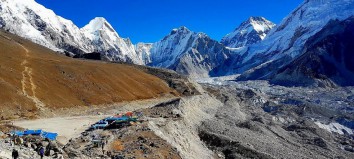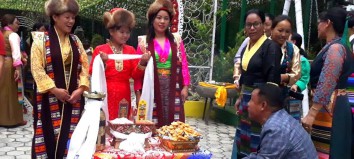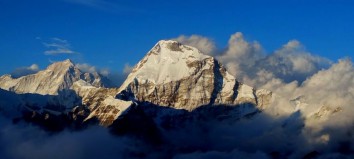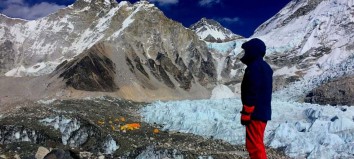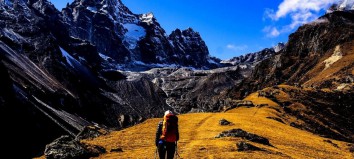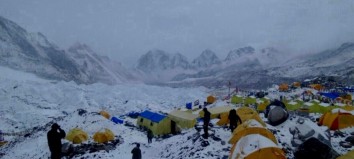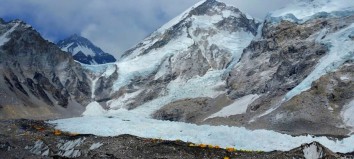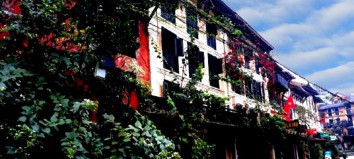Visit Lumbini | Buddha’s Homeland
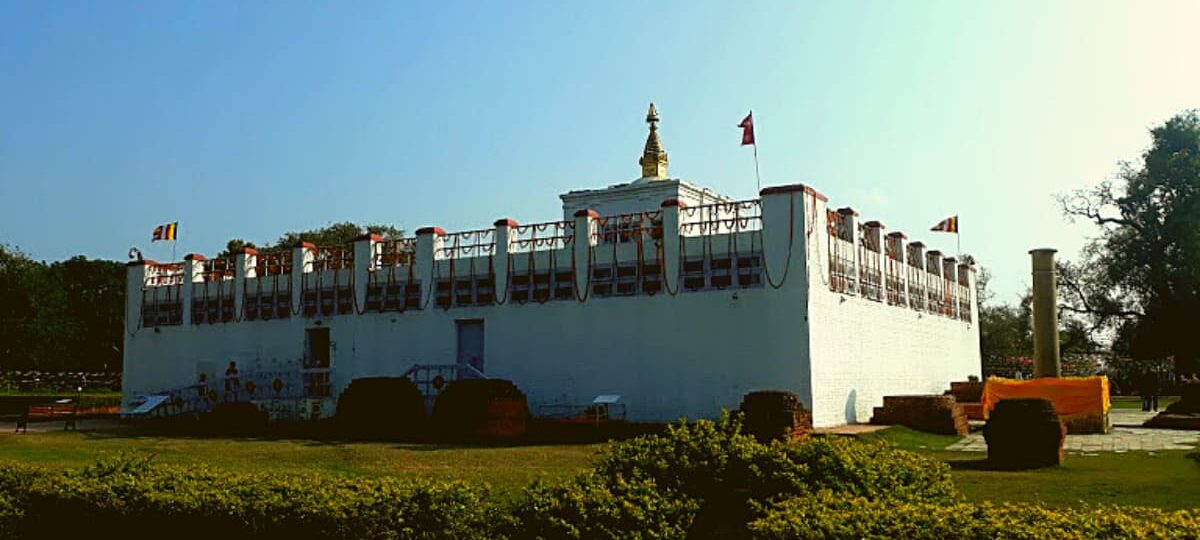
Lumbini is one of the essence for anyone who wishes to visit Nepal. Moreover, Lumbini has a religious, historical and spiritual significance and the destination is closely associated with Gautam Buddha, the light of Asia, the protagonist of peace and founder of Buddhism. Lumbini lies at Kapilvastu district in province number 5 (formerly Western Development Region). The district is surrounding by Rupandehi district in the east and Arghakhanchi district in the north and is the closest territory to the Indian border in the south. Lumbini encompasses the property of 1.95 hectares and the buffer zone of 22.78 hectares. The region lies at the coordinates of N27 28 8.004 E83 16 33.996. Lumbini lies at an elevation of 150 m above sea-level.

After the enlistment of Lumbini in the UNESCO World Heritage Site in 1997, the region gets even more attention as a popular tourist destination, both for internal and external. One can observe a huge ceremony and worship during the Buddha Jayanti, which usually falls on Baisakh, the first month in the Nepalese calendar.
BUDDHISM HISTORY IN A NUTSHELL
Buddhism was founded by Gautam Buddha (previously Siddhartha Gautama) around 2565 years ago. After the demise of Gautam Buddha (previously Siddhartha Gautama) circa 483 BC. Religious movements are created by his followers. The oral teachings of the Buddha are collect and organise by the members of the Sangha (Pali language for ‘association’). Consequently, his teaching was christened as ‘Buddhism’. At the outset of Buddhism, the religion was practised mainly in the East and South-East area. However, as up to know the religion is flourished in western societies as well.

Allegations that later King Ashoka, the emperor of Maurya dynasty, himself converted and endorsed Buddhist after the mass killings in Kalinga war, which claimed thousands of deaths and injuries. King Ashoka even set up an Ashoka Pillar as a monument to endorse peace and non-violence. Today, with approximately 470 million followers worldwide, it has become a major religion in the world.
Many of the people, however, consider Buddhism not as a religion but as a ‘way of life’ and ‘code of morality’. Moreover, the religion is based on ‘non-violence’, deterring superiority and discouraging condescending actions.
HISTORY ABOUT GAUTAM BUDDHA
Lord Gautam Buddha was born in circa 623 BC. Mythologies state that Mayadevi, on her way to her parent’s home had given birth to a child who would later be named as Siddhartha Gautam. Mayadevi is said to have passed away seven days after giving birth to Siddhartha Gautam. Suddodhana, the father of Siddhartha Gautama and the leader of the Shakya clan, invites the sages and other noble members of the society to shower the child with their blessings. However, one of the sages, also known as the Dharma Guru, prophesied the child to become a great person when he grew older.

There is a saying that after the demise of Mayadevi, Siddhartha is brings up by Maha Pajapati Gotami, the foster mother for Siddhartha Gautama and sister of Mayadevi. Suddodhana raises Siddhartha Gautama inside the palace with luxuries and amenities. Following the prevailing customs, Siddhartha Gautam marries to Yashodhara and the couple had a child namely Rahul.
Things take a dramatic new turn as Siddhartha Gautama set off for a journey. To his surprise, he has a chance to confront the life that is beyond the lavish lifestyle he has exercising inside the palace. He exposes to the human sufferings and reality of life. He on his trip witnessed older people, sufferings of the people and deaths. The event intrigued Siddhartha Gautam to the find the answer for all these sufferings in the human lives and to acquire the answers to all his questions he finally left his newly born son, wife and even the palace to seek the true enlightenment.
What Buddha did
There is a saying that during his meditation, he followed the guidance from several spiritual leaders. To double up his efforts. He had even sacrificed food and lived an austere life. However, since nothing is changing and his answers to all the questions are still unanswered. He decided to accept the offering from one of the young girls. He later realises that inner liberation has nothing to do with the hard physical constraints. Later, Siddhartha Gautam calls it a Middle way, signifying to create a balance rather than to stick to extremities.

The pure enlightenment that Siddhartha attained was when he meditated for several days in the Bodhi tree. There is one saying that on the full moon day, while he was meditating, he got answers to several of his questions, for instance, his past life, human sufferings, purifying the mind and soul in addition to this questions. Consequently, the knowledge he acquires makes him Buddha, meaning ‘enlightened’ or ‘one who is awake’. Buddha then preaches his first sermon, Setting in Motion the Wheel of Dharma, where Eightfold paths and four noble truths are explaining. These preaching later became the cornerstones for Buddhism. For the remaining 80 years, he preached about Buddhism (Dharma) to assist others in the path of enlightenment. It is Buddha in his last words has asked his disciples to follow no leader.
BEST TIME TO VISIT LUMBINI
Since Lumbini lies the Terai region of Nepal, the climate could be scorching hot during summer. April and May are the hottest seasons in Lumbini when the temperature reaches up to 38-40℃ in summer. The season could not be ideal for those who cannot stand the heat. Having said that, Buddha Purnima (Buddha’s Birthday), falls on one of these months, which again has a cultural significance to visit the place. One could behold the worship and religious activities conducted in the place and place livens up during the period. People from different parts of the world visit the place during the period.

To those who are agitated about the sweltering hot climate, March and July could be yet another alternative to visit Lumbini. The climate is relatively chiller during these months and you could even interact with local people and watch the rare flora and fauna during the period. October and December also furnish you the decent weather conditions to visit as skies are clearer during these months. On the contrary, the temperature goes down during the months of January to March due to the bone-chilling climate. The weather might get foggy during these months. Monsoon usually starts from April till May.
PLACES TO VISIT IN LUMBINI

Lumbini, being the birthplace of Buddha, is of the essence to many visitors who wish to know more about Buddhism, not to mention the life and teachings of Buddha. Below are some of the places that might allure you in Lumbini.
Ashoka Pillar

Ashoka Pillar carries a huge significance to the historians and provides a great deal of information to the scholars of archaeology. The pillar is lying next to the Maya Devi temple. King Ashoka erect the pillar after he converted himself to Buddhism as a monument symbolising Buddha. The enlightened one was born in the region. The pillar is about 22 feet tall and is well preserves in the Lumbini area. The information in the Ashoka pillar inscribes in Pali language.
World Peace Pagoda

World Peace Pagoda symbolises the monument of peace. Also known by the name, Japan Peace Pagoda, the monument builds in pagoda architecture with a dome in the middle. As you walk upstairs through any of the two stairs available, you could discover the mesmerising vista of Lumbini Garden. The pagoda’s white colour which dedicates to ‘peace’ and is one of the not to miss pagoda of the 21st century.
Mayadevi Pond

Mayadevi Pond is yet another monument to look at during the Lumbini visit. There is a saying that the pond where Mayadevi, mother of Buddha, take bathe. In addition, it is also said that Siddhartha Gautama, after being born was bathed here. The tranquil water in the rectangular shape is worth visiting if you visit Lumbini.
Bodhi Tree
Bodhi tree lies adjacent to the Mayadevi pond. The tree is of the essence of Buddhism. Buddha attains the enlightenment while meditating under a bodhi tree. In addition, even after enlightenment, the preaching by Buddha done sitting under a bodhi tree. Visitors can behold the monks staying under the tree and reciting the mantas and if you are lucky you may experience the tranquillity under the tree while you observe the holy Mayadevi pond.
Dharma Swami Maharaja Buddha Bihar
The monument was built by His Eminence Chogya Trichen Ringboche and Raja of Mustang. The monument was built in Tibetian Gompa style. There reside the monks who conduct Tara puja daily inside the Bihar.
Cambodian Monastery
With the completion in 2018, the monastery gives the touch and feel of an Angkor Wat, one of the largest religious monuments in Cambodia. The walls of the monastery showcase the state-of-the-art decoration and the temple is surrounded by square railings.
Lumbini Museum
Lumbini Museum holds the artefacts and art gallery that showcases the facts and finding related to Buddhism. The rare Indian paintings related to Buddha and other replicas of Buddhist are the attraction that might intrigue you during your visit. The museum aims at disseminating remarkable findings related to Buddhism such as Ratnasambhava, Bodhisattva and so forth. A must visit the place to anyone who is interested in history and archaeology.
Tilaurakot
The historical place Tilaurakot identify as the site where Gautam Buddha spent his first twenty-nine years of his life. The site consists of the remains of the large residential compounds explaining the civilisation during the period.
The other attractions besides the aforementioned sites could be Sri Lankan Monastery and Lumbini Monastic Site that might be worth visiting.
Chinese Monastery
Chinese Monastery, also known as Zhong Hua Chinese Buddhist Monastery, is a pagoda-style monastery. Inside are a massive shrine and prayer equipment. The monastery has a lovely garden on either side of the way to the temple.
Royal Thai Buddhist Monastery
Royal Thai Buddhist Monastery is a wat-style monastery. Constructed with the glistening white marbles, the monastery also has a blue-roofed meditational centre. The architectures and designs inside the building are exceptionally beautiful too.
Korean Monastery
Korean Monastery, also known as Dae Sung Shakya, is another monument representing South Korea. The monastery is a three-storeyed structure with beautiful decorations and carvings on the wall. It is yet another pagoda-style shrine to look at.
Myanmar Golden Temple
Myanmar Golden Temple resembles Shwedagon Pagoda and is yet another spellbinding monument in Lumbini deserving a visit. As the name implies the temple is in golden colours on its outer part. It is one of the oldest structures. The temple has three impressive prayer hall.
